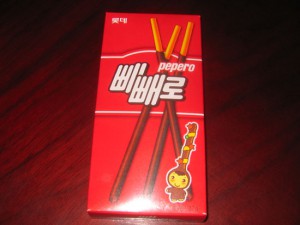*Note: Taylor is a member of the student organization USC Troy Camp, a group that mentors/tutors students in the South Central L.A. area and raises funds during the year to send 200 elementary schoolchildren from South L.A. to a week-long summer camp in Idyllwild, CA. This week-long camp is completely run by the counselors, and through the year many legends and traditions have developed that are upheld/told each year at camp, carried on by newer counselors as older ones graduate. Because I am also a member of Troy Camp, she didn’t provide any context for this, so I figured I’d do so to minimize confusion. This particular story is the story of the meteor candy, which we tell to campers outside on a big grassy field under the stars at night.
COLLECTOR (myself): So tell the story we tell the kids, and then also explain what we do with the candy.”
INFORMANT: “Okay, so we’re sitting out on the field with our cabin, and we tell them we have a very special story to tell. Okay, so…
Years ago, before any of us were in Troy Camp, there was a family who lived in Idyllwild in a little cabin up in the mountains. There was a little girl and her mother and father, and one day the mother got very sick, and the girl and her father went out down the mountain to try to get the medicine that could save her. They walked many miles to town and got the medicine, but as they were walking back through the forest, suddenly the sky FLASHED and something huge fell from the sky. BOOM! It was a giant meteor! It crushed all the trees and sent smoke and debris everywhere, and the girl and her dad got separated. They called out and called out, but they were too far away – they could barely hear each other. There was so much smoke and it was so dark that neither one could see the other. The girl sits down in defeat and begins to cry. She picks up a piece of the meteor and throws it in anger… but when it hits the ground, it creates a bright spark! The girl has an idea. She picks up more pieces of the meteor and throws them, creating sparks each time. Suddenly, from all the way across the clearing, through the smoke, she sees a spark. Her father has seen the sparks, and now he’s throwing pieces of the meteor too!! The girl and her dad keep throwing meteor pieces and making sparks until they’re close enough to hear each other and then to see each other. They gave each other a big hug and continued back up the mountain to give the mother her medicine. The meteorite had cleared a big hole in the forest, a lot like the field we’re sitting in right now. But the best part was that the candy shop down the road got little bits of the meteor all over it, so the candy they make still has liiiittle pieces of the meteorite in it. Did you notice the candy shop we passed on the way up [of course, we didn’t pass a candy shop, but none of the kids were looking out for one, so this part gives the story more validity]? We have some of these candies for you tonight.
And then we give each camper a mint Lifesaver, but like they don’t know it’s a Lifesaver, and we tell them to turn to a partner and chew the Lifesaver. And when they bite into the Lifesaver, usually it makes a tiny little spark in their mouths. It’s really cool, I don’t know why it does that.
—
Thoughts:
This is one of my favorite TC traditions, because the younger kids are usually totally amazed. Some of the older kids figure out that the candy is just a Lifesaver, or they look for the candy shop on the bus ride back down the mountain and notice it doesn’t exist, but most of the campers are completely captivated by the meteor story. It helps because we tell the story in a big clearing, so we can pretend that’s the spot where the meteorite hit many years before. After we tell the story, usually the cabins lay out and look at the stars, because a lot of the campers haven’t really seen many stars in their lifetime because they’ve never left LA.
The story doesn’t have much of a message, but it’s a fun way to bond the cabins and contribute to Troy Camp lore to make the campgrounds seem almost magical. This story, like Mary Brown, is told slightly differently by each counselor who tells it, though the general elements remain the same.

